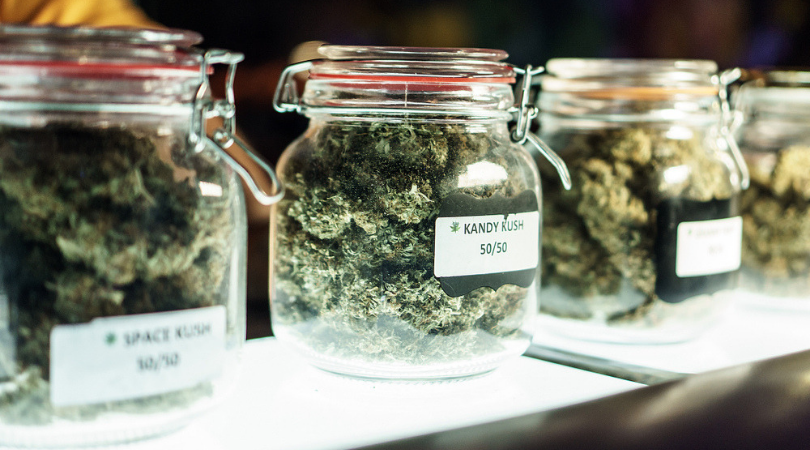If you’re around weed on a regular basis then you have no doubt heard the terms sativa, indica, and hybrid. These terms are used to refer to the variety of a specific strain. Each variety is believed to produce different effects. Sativa strains are known for their ability to producing soaring, euphoric head highs. Meanwhile, indicas are known for their ability to sedate and relax. However, things are actually much more complicated than this.
The terms ‘sativa’ and ‘indica’ first appeared in the 18th century to describe different varieties of cannabis. The term sativa was generally applied to cannabis plants originating from Europe, western Eurasia, and tropical/equatorial regions. Cannabis indica, on the other hand, refers to strains originating from the mountains of India and Pakistan.
Nowadays, the terms are strictly used to refer to strains that grow in certain ways and produce certain effects.
The Physical Differences Between Indica And Sativa
The physical differences between indicas and sativas are so prominent that identity can sometimes be determined by eye. They will not only look different during growth but will also produce different kinds of flower buds.
Sativa plants tend to grow tall and lanky. They can sometimes reach over 2 meters in height, making them a poor choice for indoor grows. The leaves and buds of the plant grow far apart as the plant stretches upwards through its growth cycle. As a result, the leaves of sativa plants are usually much thinner than those of an indica.
In order to maximize flower production, sativas typically require more feeding (nutrients) than indica strains (probably due to their size). Additionally, they usually require more trimming and training in order to deal with overgrowth that may be preventing light from reaching cola sites.
Sativa plants typically produce smaller and tighter flower buds than indicas.
By comparison, indica plants tend to grow smaller, shorter, and bushier. These kinds of strains grow to about half the height of sativas, usually reaching a maximum of 6-7 feet. Their smaller size makes them ideal for indoor growers that are working in limited space. Compared to sativa leaves, the leaves of an indica plant are much thicker and more compact. Additionally, because of their size, they are more resistant to external threats and tend to grow healthier in general.
Indica plants usually produce larger, thicker flower buds than sativas.

Different Strains, Different Effects
Sativa strains are notorious for their uplifting cerebral effects. As opposed to indicas, they are known for producing psychological effects rather than physical effects. Some strains have been known to produce energizing effects that boost focus and creativity. When compared to indicas, sativas will not make you as sleepy or hungry. Because of this, these strains are considered ideal for a daytime high, whereas indica strains are preferred for nighttime use.
Indica strains are well-known for their physically sedating and relaxing effects. These effects have made them a favorite of the medical marijuana community where indica strains are commonly used to treat illnesses ranging from insomnia to chronic pain. Indicas are known to make people sleepy and hungry, especially near the end of their high. Many indicas are so sedating that they produce a significant ‘couch-lock’ effect that effectively demotivates most people from doing any kind of physical activity.
For a long time, it was believed that this was the correct way of sorting strains based on the effects that they produced. However, as research into cannabis has advanced, researchers have come to find that predicting the effects of a specific strain is much more difficult than that. Much of it actually comes down to cannabinoids and terpenes.
Terpenes & Cannabinoids
The cannabis plant contains hundreds of different cannabinoids that interact with the human body’s inner endocannabinoid system to produce systemic effects. They work in harmony with each other, and with cell receptors in the brain, spine, and nervous system to induce the ‘high’ that is commonly associated with marijuana.
Researchers have found that different cannabinoids are actually responsible for producing different effects. For instance, certain cannabinoids might make individuals more sleepy, whereas others might actually energize them. As such, a better predictor of the effects a strain will produce is its cannabinoid content, rather than whether it is an indica or a sativa.
The term ‘terpenes’ refers to the aromatic compounds contained in natural plants such as flowers, fruit, and cannabis. They are secreted by the same gland that is responsible for producing cannabinoids like THC and CBD and are responsible for giving cannabis plants the fruity, earthy, skunky smell that they are known for. However, research has shown that they do more than this.
Terpenes actually work by themselves, or in conjunction with cannabinoids, to produce some of the effects that are experienced during a ‘high’. The presence of certain terpenes in cannabis buds can make users feel more relaxed or stimulated, depending on what is present. For instance, the terpene pinene is believed to produce energizing effects, whereas the terpene linalool has been found to producing calming, sedating effects.
Researchers have found that the specific effects produced by any one strain will effectively depend on the specific cannabinoids and terpenes found in the plant, and the ratio at which they exist in synergy with each other.

The Medical Uses of Sativas And Indicas
Because they tend to produce vastly different effects, these two classes of strains are typically used to treat completely different medical conditions.
Sativas are most commonly used to treat psychological conditions like stress disorders or depression. Since they usually contain a higher THC content than indicas, they are not ideal for those looking to relax, or combat stress or sleep disorders. On the contrary, those suffering from depression or lethargy may find the energizing boost these buds produce to be just what they need to get them out of bed and on their way in the morning. Sativas have also been known to treat other psychological conditions such as migraines and headaches.
Indicas are most commonly used to treat physical and neurological pain. The numbing, relaxing, and sedating effects are perfect for mitigating chronic physical pain. This makes them great for treating conditions such as back pain or multiple sclerosis. Moreover, the ‘couch-lock’ effect produced by these strains is ideal for treating sleep (insomnia) and anxiety disorders (PTSD, SAD, etc.).
Hybrids
Hybrid strains effectively contain a mix of sativa and indica genetics. Some strains are believed to contain balanced 50/50 genetics. However, these are quite rare. Most hybrid strains contain more of one than the other and, therefore, they tend to produce a mix of effects.
Rather than being excellent at any one thing, hybrids are considered to be a jack-of-all-trades. As such, they are appreciated more by recreational users looking for a fun and balanced high, rather than by medical users who require their marijuana to produce specific effects.














